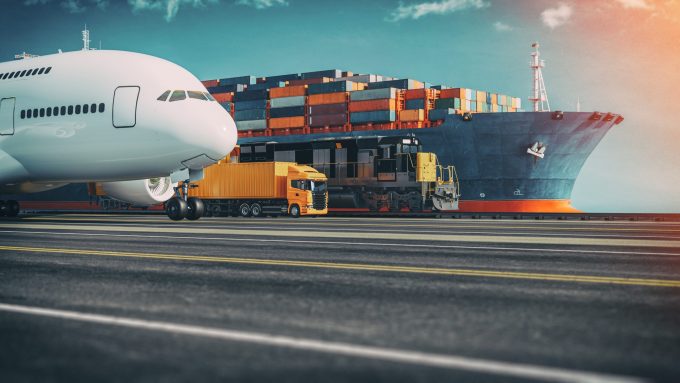Three Main Global Transport Segments Post-COVID
All industries across the world have felt the consequences of the coronavirus pandemic, in particular, the aftermath of coronavirus logistic wise in the freight forwarding industry have taken a hit. Freight forwarders have initially seen a drop in demand; however, by quarter three, there is now a shortage in shipping containers due to a spike in online shopping. The post pandemic logistic industry impact can be observed in the three main global transportation segments, namely ocean, air, and land.
Ocean Freight Demand Spikes Leading to Container Shortage
- The post coronavirus freight forwarding industry’s demand initially dropped by 10.1 percent.
- Key exporters – Brazil, China, India, Mexico and importers like European Union significantly constrained ocean freight across the world.
- By July, there was a spike in the demand for container freight. Reasons for the increase in demand include: post-lockdown restocking, limited air-freight capacity, demand for stay-home goods, personal protective equipment as well as online shopping leading to a severe container shortage.
- In November, the cost to ship a container from China to the U.S. East Coast has topped $4,750, an increase of 42 percent since July.
Air Freight Still Not Fully Recovered
- The post pandemic logistic industry has caused demand for air freight to drop by 19 percent by Q1.
- Prices increased as flights were cut drastically resulting in a competition for the availability of cargo hold space.
- Although sea transport has begun to grow again since September, air cargo transport has not resumed 70 percent of its pre-COVID level. This further increases the pressure on ocean freight leading to container shortage.
Land Freight Remains Consistent
- During the start of the pandemic, land transport still remained available as roads are still in operation. However, trucking capacity was strained because of the additional demand for services such as food, medical and supply transportation.
- The post coronavirus logistic industry led to manufacturing sectors not at full capacity.
Market Disruptions
Disruptions to the supply chain in the post pandemic logistic industry lead to delivery delays, congestion and higher freight rates. Yet, e-commerce companies are actually seeing an increase in demand and activities as online shopping skyrockets. Small players are severely hit this year as these businesses tend to not have backup or recovery plans on hand. Noticeably, their lack of technology also impedes their pandemic response.
The competitive advantage of digitalization during the post pandemic logistic industry
E-commerce is revolutionizing the world, especially in the post pandemic logistic industry. Companies with advanced technologies are at an advantage as they are able to provide cargo visibility and traceability as well as conduct businesses online. Investments in the Internet of Things (IoT), cloud computing, automation and data analytics are all valuable and worthwhile.
Digitalization is a top-down process where carriers digitalize processes. Freight forwarders are able to improve customer experience online, gather and analyze data, and digitalize products and services. Freight forwarders need to understand the importance of digitalization in order to gain a competitive advantage, especially during the post pandemic logistic industry.
Finally, the aftermath of the pandemic is a great opportunity for freight forwarders to utilize digitalization to provide extra-value to customers. For instance, in response to demurrage and detention, having space guarantees can help counter blank sailings and container shortages.
GoFreight’s value of increasing responsiveness speed and preventing supply chain interruptions
Cloud-based freight forwarder softwares such as GoFreight can improve responsiveness, prevent supply chain interruptions and streamline operations. As observed, when the pandemic forced companies to shift to work from home, cloud based SaaS allows logistic workers to smoothly continue with their work. GoFreight’s cloud based solutions are designed to be efficient, flexible and scalable to ensure long-term growth. As the year draws to a close, start off 2021 with trends that will ensure a competitive advantage.






